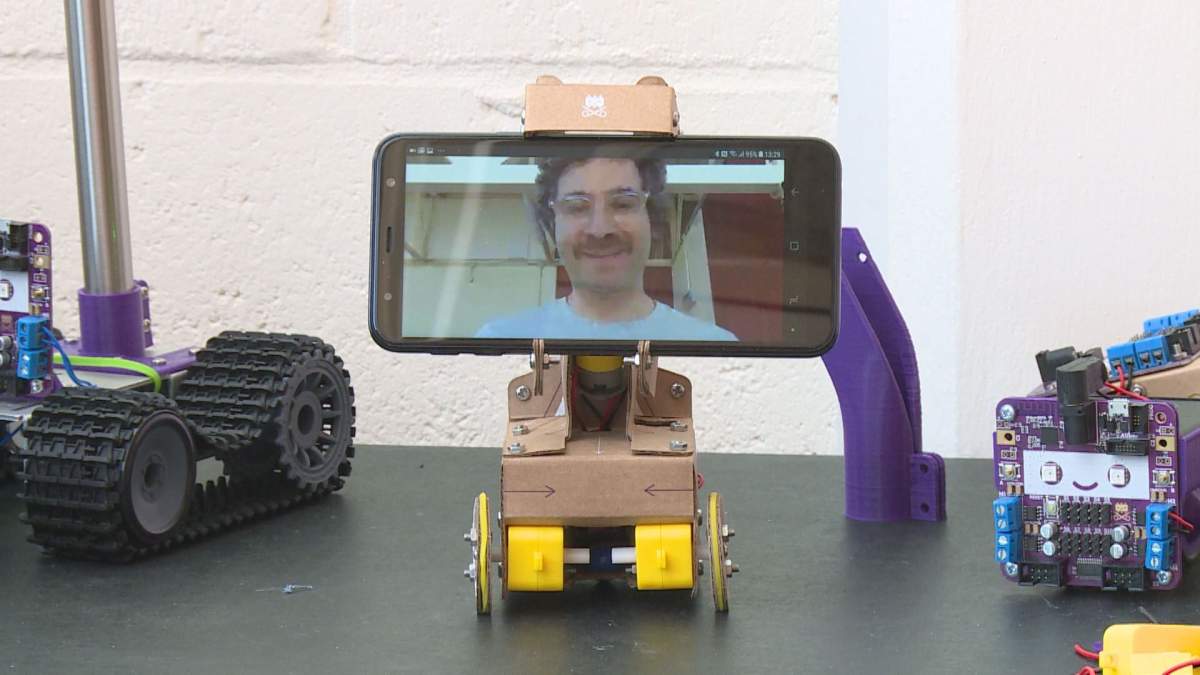A British design consultant has built a small self-assembly telepresence robot that he hopes can bring families and friends closer together, both during and after the COVID-19 pandemic.

Ross Atkin from London has been designing toy robots for five years.
During the COVID-19 lockdown, he felt like he could improve the experience of family Zoom calls by tweaking the design of one of his toys.
The new robot combines a cellphone app with a small cardboard robot, to put someone in charge of what they see on a video call.
“Having a video call is nothing like being with someone, because you’re stuck in this little rectangle (cell phone), and you are completely dependent on what they’re doing with their rectangle,” said Atkin, a self-confessed design geek.
“So what the robot does is it allows you to move yourself around in their environment. So you’re on a video call, but you’ve also got some buttons and you can press the buttons and you can drive forward and backward and you can turn to look whatever you want and you can tilt so you can look up and down.”
The 38-year-old father of a toddler says the ability to interact in that way is something that works particularly well with small kids.

Get breaking National news
“Being able to just leave the grandparents, or the in-laws in the robot to chase the toddler around themselves without having to follow him around holding the phone, that then meant both of us could do something,” Atkin said. “He could play and they could still interact with him.
“Previously, it was a job for someone to just to follow him around holding the phone, so that they could keep looking at him. Because if you gave him the phone, he just put it down after 10 seconds, and they’d be either looking at the ceiling or looking at the table.”
It’s not a substitute for babysitting, but Atkin says the feedback he’s had so far has told him he’s onto an idea that resonates.
“In terms of how other people have reacted to it, it’s really, really lovely,” he said. “I don’t I think ever get sick of watching people react to that for the first time.”
For the young and old
Larger telepresence robots are often used in business and education, but the machines can sometimes cost up to $5,000.
Atkins’ ‘Smartipresence’ robot costs about $100, using a Kickstarter campaign — the same funding method he has used for previous toys.
He also works as a design consultant on accessibility projects for people with disabilities.
He says the COVID-19 pandemic has made him realize that other variants of a cheap telepresence robot could help people in numerous situations.
“About two months ago, I was absolutely just horrified that there were all these people that were dying without seeing their family at all. And that was definitely one of the things that galvanized me to try and do something in this space,” he said.
“This (robot) isn’t the solution to that problem, but it’s a step on the way to solving that problem.”
Atkins admits that nothing can replace face-to-face contact, but with so many people working from home during the pandemic, new possibilities have become obvious in many sectors.
“I think telepresence is going to be an important part of caring for people that need care in the future, even after the pandemic,” he said.
“I think you can make some care tasks a lot more convenient for the carer and for the person being cared for, and you can end up with the carer being able to spend more time caring for the person because they aren’t having to travel.”
Technology often gets blamed for making us feel further apart.
Atkins hopes his tiny toy can help do the opposite.
















Comments